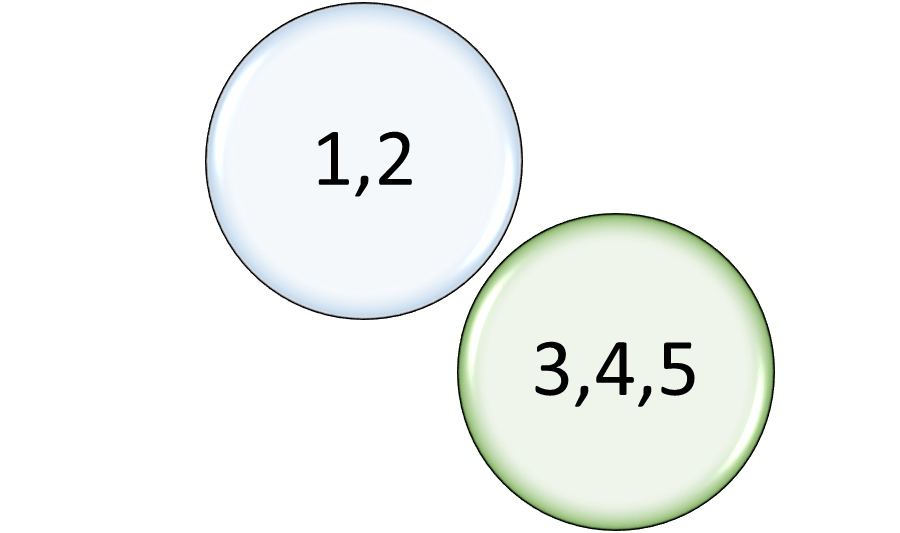Overview
The intersection of sets refers to the elements that both sets have in common, while the union of sets refers to the elements that both sets have together. If the sets are finite, the elements of the new set can be listed. Otherwise, they can be described graphically, algebraically, or by the rule that governs them.
Intersection of Sets
Suppose that Set A has the elements {1, 3, 5, 7, 9, 11} and set B has the elements {2, 3, 4, 5, 6, 7}. The intersection of those sets would be {3, 5, 7}. If the sets were infinite rather than finite, the elements of the set couldn’t be listed, so the rules for generating sets would need to be used. If set A were defined as {all odd integers} and set B were defined as {all integers greater than or equal to 2}, their intersection would be described as {all odd integers greater than 2}.
|
Figure 1: A Venn diagram shows the relationship between sets. In this diagram, the intersection between the sets is all odd integers greater than 2. |
Combining Conditions
The principles of the intersection of sets can also be used to solve problems algebraically. Suppose that one plant grows best in a range of 30% to 50% sunlight and another plant grows best when it gets at least 45% sunlight. What is the range where both plants can grow best? Let s represent the percentage of sunlight. The first plant grows best at a range where 30>s<50, and the second plant 45<s. The second plant will not grow as well when s is between 30 and 45, and the first plant will not grow well if s is above 50%. Combining the two conditions, both plants will grow well when 45<s<50.
|
Figure 2: Combining conditions will create an intersection type of problem. |
Union of Sets
Suppose that Set C has the elements {1, 2, 3, 4} and Set D has the elements {5, 6, 7, 8}. The union of Sets C and D (written in symbol form as C D), would consist of {1, 2, 3, 4, 5, 6, 7, 8}. Similar to the rules for intersection, if both sets to be combined were infinite, the rules for generating their union would need to be combined. Suppose that Set F were defined as {all odd integers} and Set G were defined as {all even integers}. Their union would be {all integers}. It wouldn’t matter if the integers were odd or even, because the union would contain elements of both.
Intersection or Union?
Suppose that the problem is one of probability. An unbiased die (singular of dice) has six possible outcomes when it is tossed. The probability of tossing an even number and a number greater than 2 is the intersection of two sets. If set H is {2, 4, 6} and set I is {3, 4, 5, 6}, the intersection of those sets is {4, 6}, or about a 33% probability. Suppose set J consisted of the numbers {1, 2} and set K consisted of the numbers {3, 4, 5} as faces of the unbiased die. The probability of tossing either of the numbers in set J or set K or {1, 2, 3, 4, 5}, a 5/6 probability.
|
Figure 3: The union of sets produces a new set that combines the contents of all the sets. |
Interested in algebra tutoring services? Learn more about how we are assisting thousands of students each academic year.
SchoolTutoring Academy is the premier educational services company for K-12 and college students. We offer tutoring programs for students in K-12, AP classes, and college. To learn more about how we help parents and students in Minot, ND: visit Tutoring in Minot, ND




